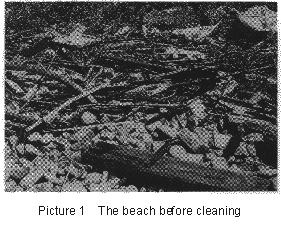Conference to introduce results from the 100-School Networking Project (Phase
II)
Elementary school meeting
Educational Use of the Internet at Our School
Tadao Furukoji, Kitakyushu Komorie-Nishi Elementary School
1. Introduction
- Introduction to our school
2. History of computer education at our school
- We have focused on information education as a research theme since FY 1994.

3. Planning for FY1997

- Research on efficient computer use, so that children can reach the goals
established for each lesson
4. Practice 1. Second Grade, Class 1 Subject: life science Teacher: Usukine
Unit: "Let's explore Itozu Yuen (a zoo)"
(1) Preparatory work before class
- (2) Correlate actual experiences with computer use
- 1) Research on transportation to the zoo: using Nishitetsu Bus's home page
to find out what bus we should take, where we get board the bus, and how long
the trip will take
2) Creating a course
Autonomous, diversified activities (each group decides on a course for what
they need to accomplish)
(3) After doing the field work, the children are more interested in animals,
asking new questions about them.
- Creating a trip report
- Using e-mail
- A short lecture given over the telephone
(4) Summary
5. Practice 2. Fourth Grade, Class 2 Subject: Japanese Teacher: Nakai Unit:
"Let's produce a play in our own dialect"
(1) Interest in dialects
- The teacher in this class often reads books to children. Children tend to
like stories written in unique dialects and folk tales from various regions.
Many children first became interested in dialects when they learned about
"Kicchomu's stories" in the first term, and they began talking about
words their grandparents use. Already familiar with using the Internet, the
children suggested using it to find out more about dialects from various regions.
(2) What the children wanted, and creating the unit

(3) Cooperation by e-mail
- Children separated into four groups, each group assigned one dialect to
research. The dialects of the Osaka, Miyazaki, Toyama, and Yamanashi prefectures
were chosen for the study.
- We asked for help using the mailing list of the 100-School Networking Project.
- In doing the research, the children became more aware of where they live.
Some people wrote e-mail in their own dialect, as well as in standard Japanese.
By reading the e-mail, the children learned that the words they usually use
are not standard Japanese, but a unique dialect. We would like to sincerely
thank the many people who helped us.
(4) Conclusion
- We presented the play to the children's parents.
- Many people were glad to help children study during this activity, further
motivating both teachers and children.
6. Summary and future goals
- One result of this activity was that the children learned what networking
means: a coming together of people. I feel that little by little, schools
are becoming more open to the outside world. I want to continue this research
so that in the future, we'll have the capacity to help others.
Eventually, every school in our city will be part of the network, although
this is not the case now. I think our school should deepen its connections
with schools in the city and nearby areas, based on the experiences we've
had so far, and create a system that allows schools to use and share information
and materials.
The Internet is a great tool for children. It gives them a chance to find
out more about where they live, and a chance to learn how to exchange their
thoughts and feelings with others.
Our future research will focus on the following:
- Creating a home page for each classroom, based on student's unique ideas,
and providing information
- Everyday use of the Internet by teachers (collecting and exchanging information)
- Use of e-mail in lessons
 Conference to introduce results from the 100-School Networking Project (Phase II)
Conference to introduce results from the 100-School Networking Project (Phase II)




 Conference to introduce results from the 100-School Networking Project (Phase II)
Conference to introduce results from the 100-School Networking Project (Phase II)